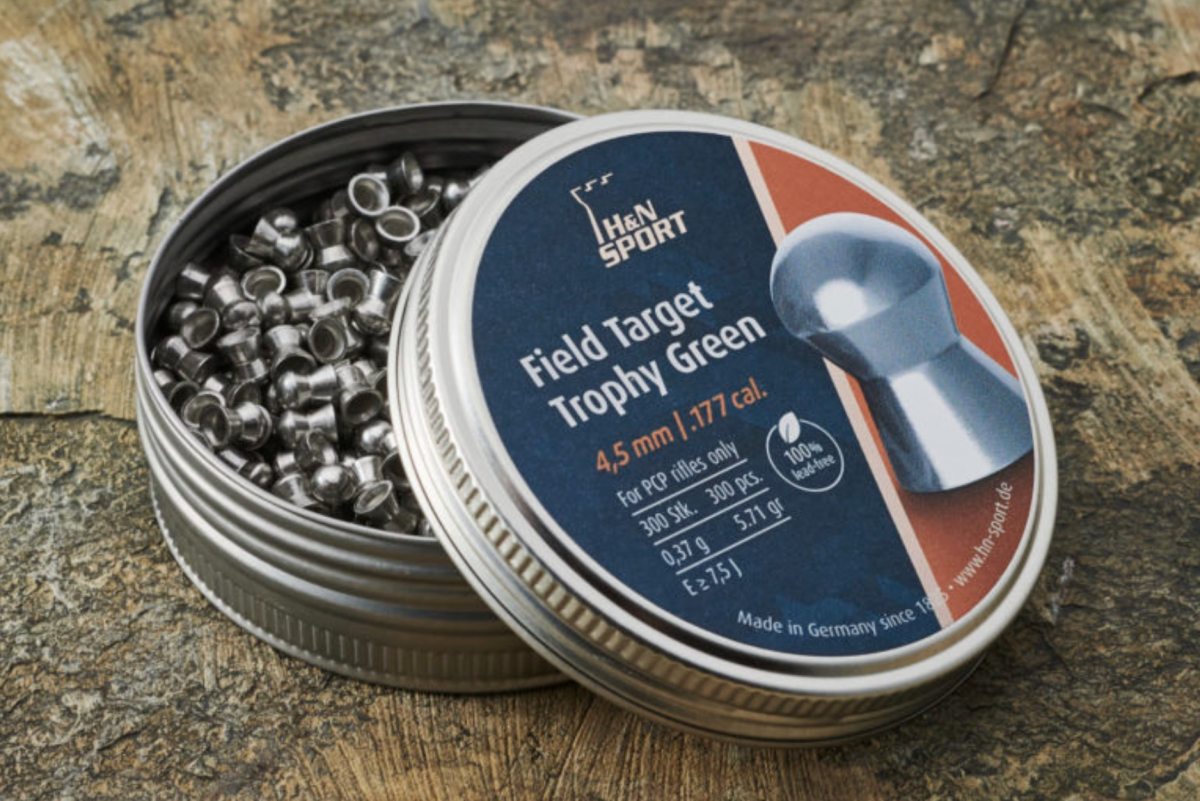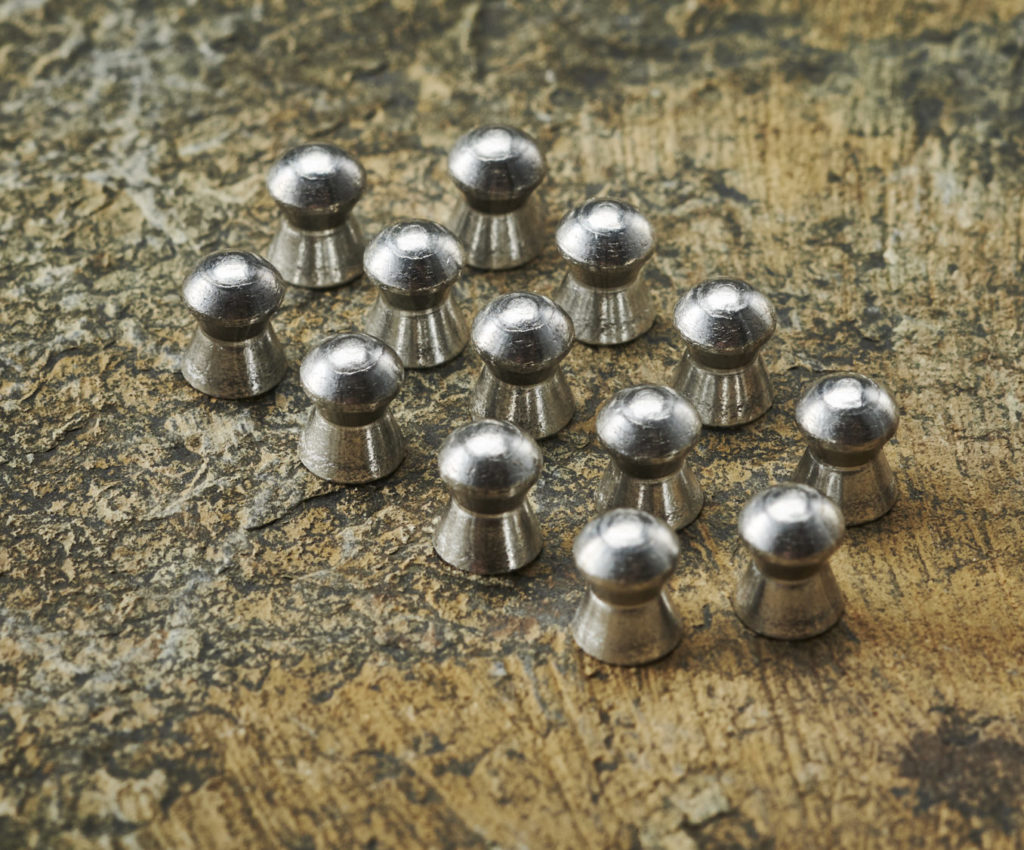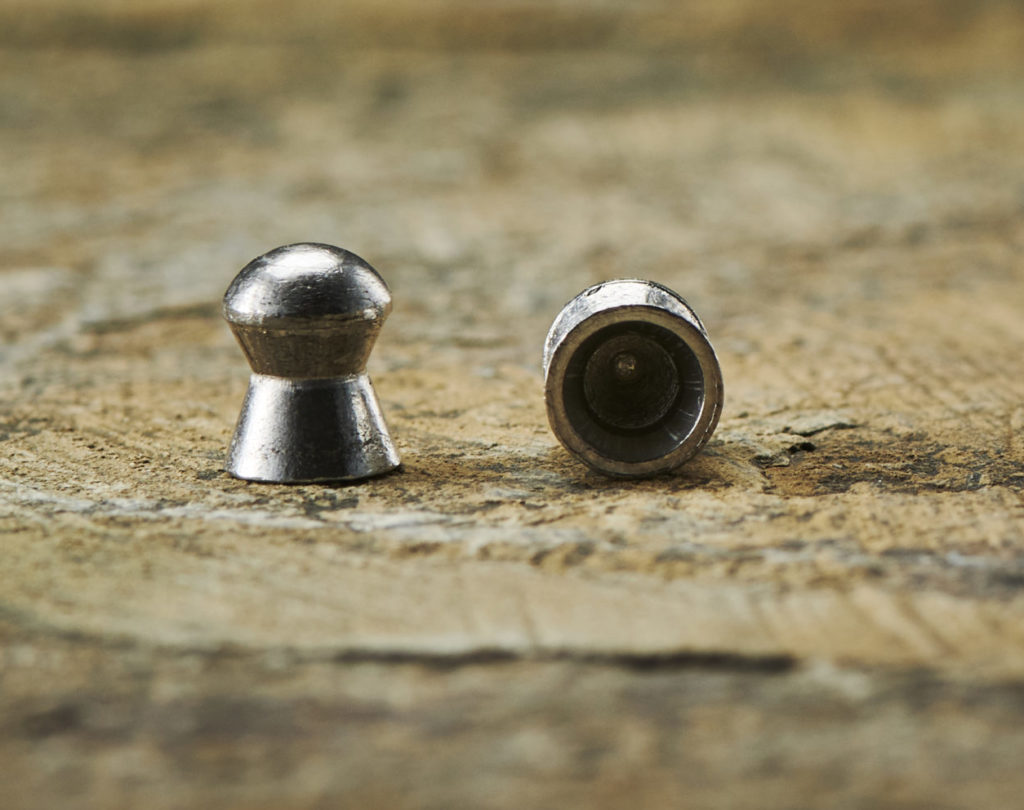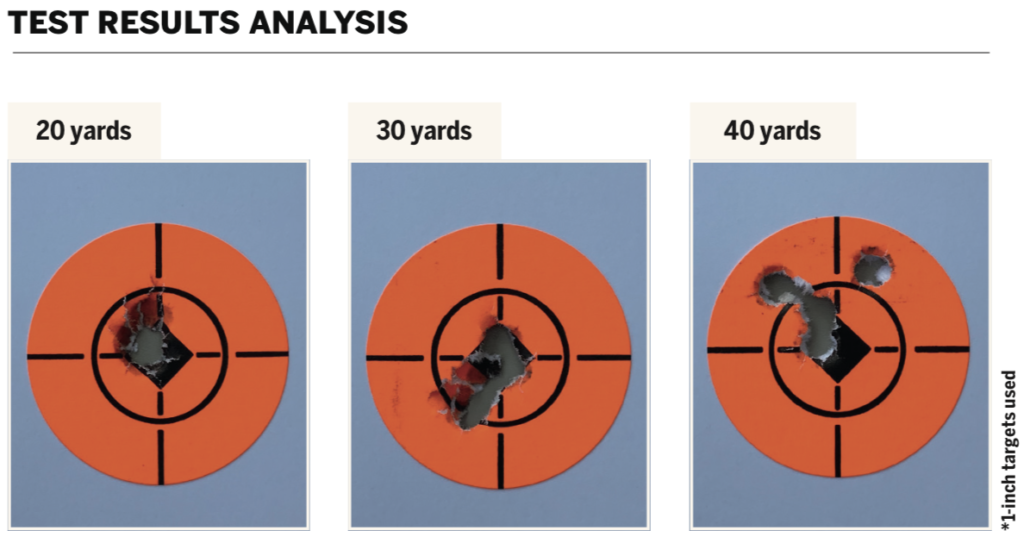H&N Field Target Trophy Green pellet
Mike Morton becomes environmentally aware and decides to test Field Target Trophy Green, a lead-free alternative from H&N

H&N Field Target Trophy Green pellet
For centuries, lead has been used to manufacture ammunition fired by both powder-burning firearms and airguns. Lead is relatively inexpensive, fairly easy to form, deforms well on impact and is dense. It’s also toxic, which is why many manufacturers offer lead-free alternatives, like Field Target Trophy Green from H&N.
In some areas, the use of lead-free ammo is a requirement, while airgun shooters in the UK are free to choose what type of pellet they shoot – at least for now. But it doesn’t hurt to test the lead-free options, and even if we are never compelled by law to abandon lead, we can always choose to help the environment, provided we can find lead-free ammo that shoots to a decent level of accuracy.
For this test I shot these .177 pellets exactly the same way as I would normally do for standard lead ammo, and as usual that began with a visual inspection. Trophy Greens come in a tin of 300 – less than usual – but were immaculate.
Even high-end lead pellets can leave some sort of metallic residue, but these shiny pellets were as clean as a whistle. Not only that, but not a single one showed any sort of damage, possibly due to the fact that the alloy they are made from is a little harder than lead.
Being produced primarily for target shooters, these pellets are a classic domehead design, but have a slightly squashed head. The wall of the skirt is quite thin, but I wouldn’t expect this to expand upon firing due to the hardness of the material.
H&N lists these pellets as weighing 5.71 grains, and while my scales only work to one decimal place, every single pellet in the random sample of 50 that I weighed came in at 5.8 grains, a result I was more than happy with.
Key Specs

Pellet: Field Target Trophy Green
Supplied by: John Rothery Wholesale (www.bisley-uk.com)
Manufacturer: H&N Sport (www.hn-sport.de/en)
Type: Lead-free roundhead diabolo
Calibre tested: .177 (4.5mm)
Supplied in: Tin of 300
Price: £11.95
Advertised weight: 5.71 grains
Measured weight: 5.80 grains
Uses: Target shooting, plinking
Test Conditions
This shoot was conducted on an extremely hot and sticky day, but while I was quite literally dripping over the stock of my rifle, the conditions were totally wind-free.
As usual, all shots were taken at a 1” Birchwood Casey Target Spot with the rifle zeroed at 30 yards. The pellets were taken straight from the tin, with one important caveat that I’ll explain later, with five shots being taken at each of the three targets.
Downrange
H&N says these pellets are suitable for PCP rifles only. Of course, the devil sitting on my left-hand shoulder was whispering to me to test these pellets in a springer anyway, but the angel sitting on the right won the day and I decided to use my Daystate Red Wolf and MTC King Cobra F1 combo.
This gun is remarkably unfussy when it comes to pellet choice, and I wanted to give this ammo a perfectly fair chance to see how well it would perform. The rifle was shot off heavyweight Dog-Gone-Good shooting bags placed under the forend and butt.

With the barrel cleaned of any remaining lead, I began zeroing the Red Wolf and was unimpressed at the outset by how poorly the Trophy Greens were grouping. Then I remembered a piece of advice I’d once been given – use pellet lube with lead-free ammo. This had a dramatic and immediate effect.
With the rifle now properly zeroed, the Wolf was sending the 5.8 grain pellets over my Shooting Chrony F1 at an average muzzle velocity of 847.4 feet per second. The variation over the 10-shot string was just 3.0 feet per second, which is one of the best results that I’ve ever recorded. But due to their light weight, and despite the high muzzle velocity, the muzzle energy was only 9.3 foot pounds.
At 20 yards, the results were simply stunning, with the Red Wolf shooting a five-shot group of 4.7mm, just over one pellet’s width. Although the rifle was zeroed at 30 yards, all shots hit point of aim. At the zero distance of 30 yards, the group measured 5.6mm centre-to-centre, with one shot going slightly low and left, but still an excellent result.

Out at 40 yards, however, the five-shot group measured 22.0mm centre-to centre, using 22mm of holdover, including one shot that landed completely off target. With that errant pellet swiftly removed from the mix, the remaining four-shot group measured a far more respectable 9.9mm.
I’d want to do far more testing before recommending these pellets for long-range target shooting competitions, and I’d also want to measure their retained energy at various distances before suggesting they be used as a hunting pellet, but at 20 and 30 yards the accuracy of these pellets was simply superb.
If we are ever forced to make the switch to lead-free ammo, maybe it won’t be such a big deal after all.








